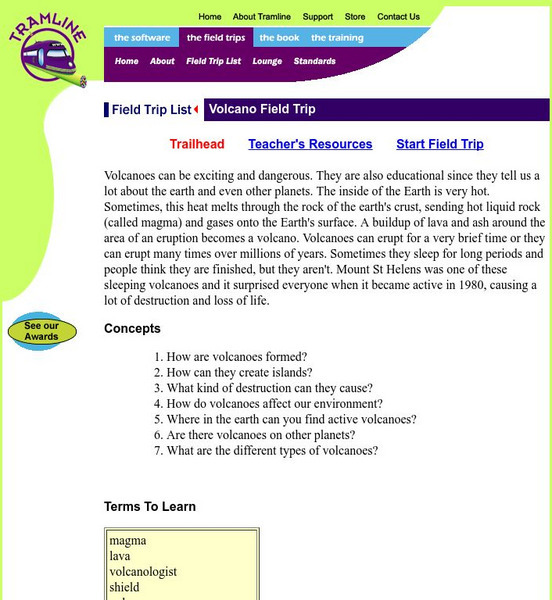Hi, what do you want to do?
Curated OER
The Seafloor
In this seafloor worksheet, students review the terms associated with formations found on the seafloor including sea mounts and seafloor spreading. This worksheet has 8 fill in the blank questions.
Curated OER
The Planet Venus
In this worksheet on the planet Venus, students look at a picture of the planet and read accompanying facts, along with a brief paragraph.
Curated OER
The Planet Mars
In this worksheet on the planet Mars, students look at a picture of the planet and read accompanying facts, along with a brief paragraph.
Curated OER
Use the Correct Present Tense Verb
In this present tense verb worksheet, students complete a ten question on-line interactive quiz about present tense verbs. Students tell what verb correctly completes each sentence.
Curated OER
Examining Ways to Organize Questions and Answers Within a Text
Students study questions and answers within a text to learn about writing structure and organization. In this writing structure instructional activity, students investigate books in class by asking questions for the text. Students then...
Curated OER
Journey to the Center of the Earth I
Students identify the elements of science fiction and write their own example. In this Journey to the Center of the Earth lesson students complete several activities about science fiction, authors and novels.
Curated OER
What's Crackin' Under New Zealand
Students construct a model of the Earth using clay and oranges. In this earth science lesson plan, students explain the causes of earthquakes and volcanic activity. They write their findings in their science journal.
Curated OER
Breaking News English: Al-Qaeda Warns of More Attacks
For this English worksheet, students read "Al-Qaeda Warns of More Attacks," and then respond to 47 fill in the blank, 7 short answer, 20 matching, and 8 true or false questions about the selection.
Curated OER
The President Wants YOU!
In this earthquakes worksheet, students answer short answer questions about earthquakes to provide information to the President. Students complete 8 questions.
Curated OER
Life of An Island
Students identify the steps in the life cycle of an island. They label islands in the correct stage of their life cycle and illustrate the process themselves. They also review the concept of plate tectonics.
Curated OER
Global Warming Is Human Made
In this environmental awareness worksheet, students read an article about the causes of global warming. Students then answer seven true or false questions, 10 10 synonym matching questions, and ten phrase matching questions based on the...
Tramline
Virtual Field Trip: Volcanoes
In this virtual field trip find out about how volcanoes are formed and what kind of destruction can they cause. Discover how volcanoes affect our environment and where can you find active volcanoes on earth and on other planets.
Read Works
Read Works: Volcanoes: Magma Rising: Studying Volcanoes
[Free Registration/Login Required] This two-page PDF nonfiction passage entitled "Volcanoes: Magma Rising: Studying Volcanoes" discusses how they study volcanoes to learn how they work. It is part of Paired Texts: "Volcanoes: Magma...
Center for Educational Technologies
Center for Educational Technologies: Exploring the Environment: Volcanoes
Learn about volcanoes and apply what you know to making decisions about how to handle real world situations. You will find lots of supporting materials for these activities.
eSchool Today
E School Today: Your Cool Facts and Tips on Volcanoes
Discusses volcanoes and what causes them to erupt, the types of volcanoes and eruptions, underwater eruptions, the structure of a volcano, and the impact of a volcanic eruption.
Idaho State University
Idaho State University: Environmental Geology: Volcanoes
Investigate the science of volcanoes on the surface of the earth. Discover their types, hazards and effects.
Other popular searches
- Types of Volcanoes
- Volcanoes and Earthquakes
- Shield Volcanoes
- Erupting Volcanoes
- Composite Volcanoes
- Internet Research Volcanoes
- Volcanoes Earthquakes
- Caribbean Volcanoes
- Ice Land Volcanoes
- And Volcanoes
- Spanish Volcanoes
- Three Types of Volcanoes




















